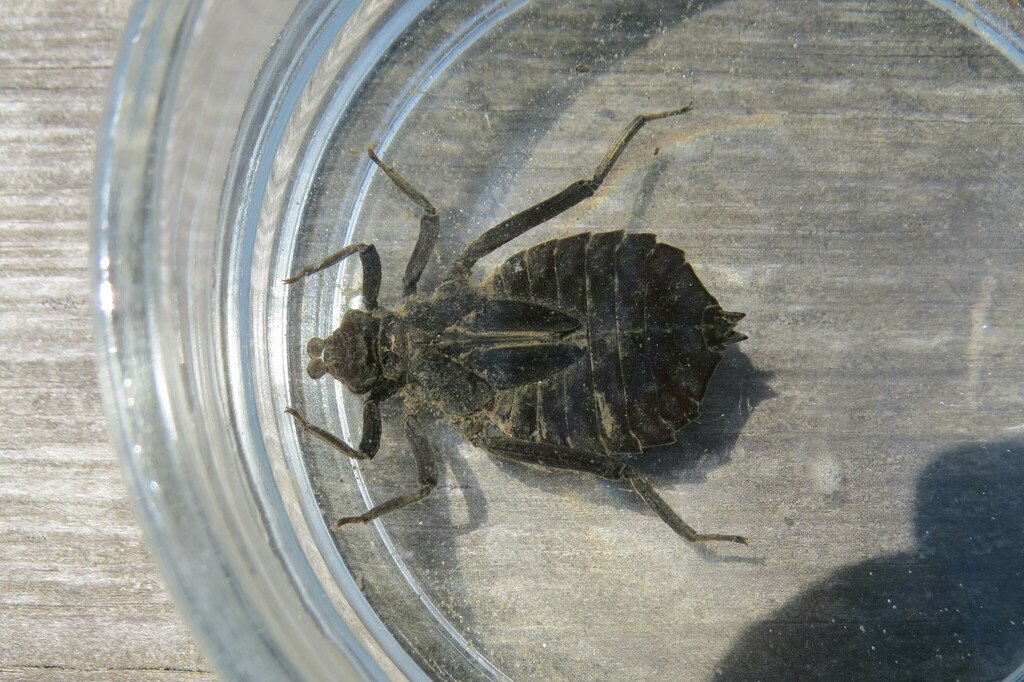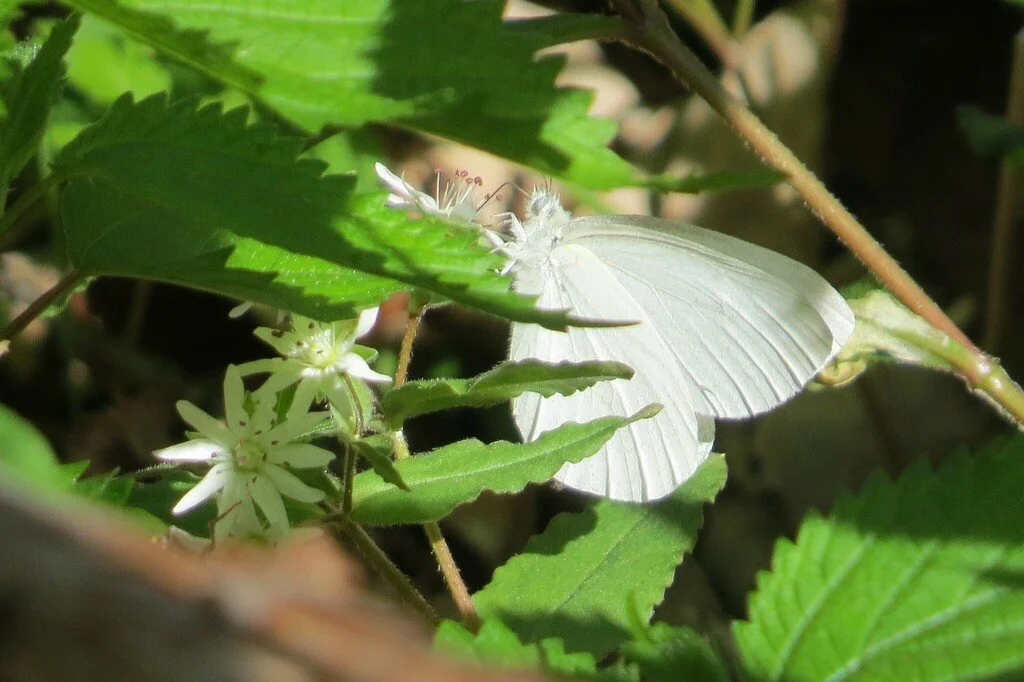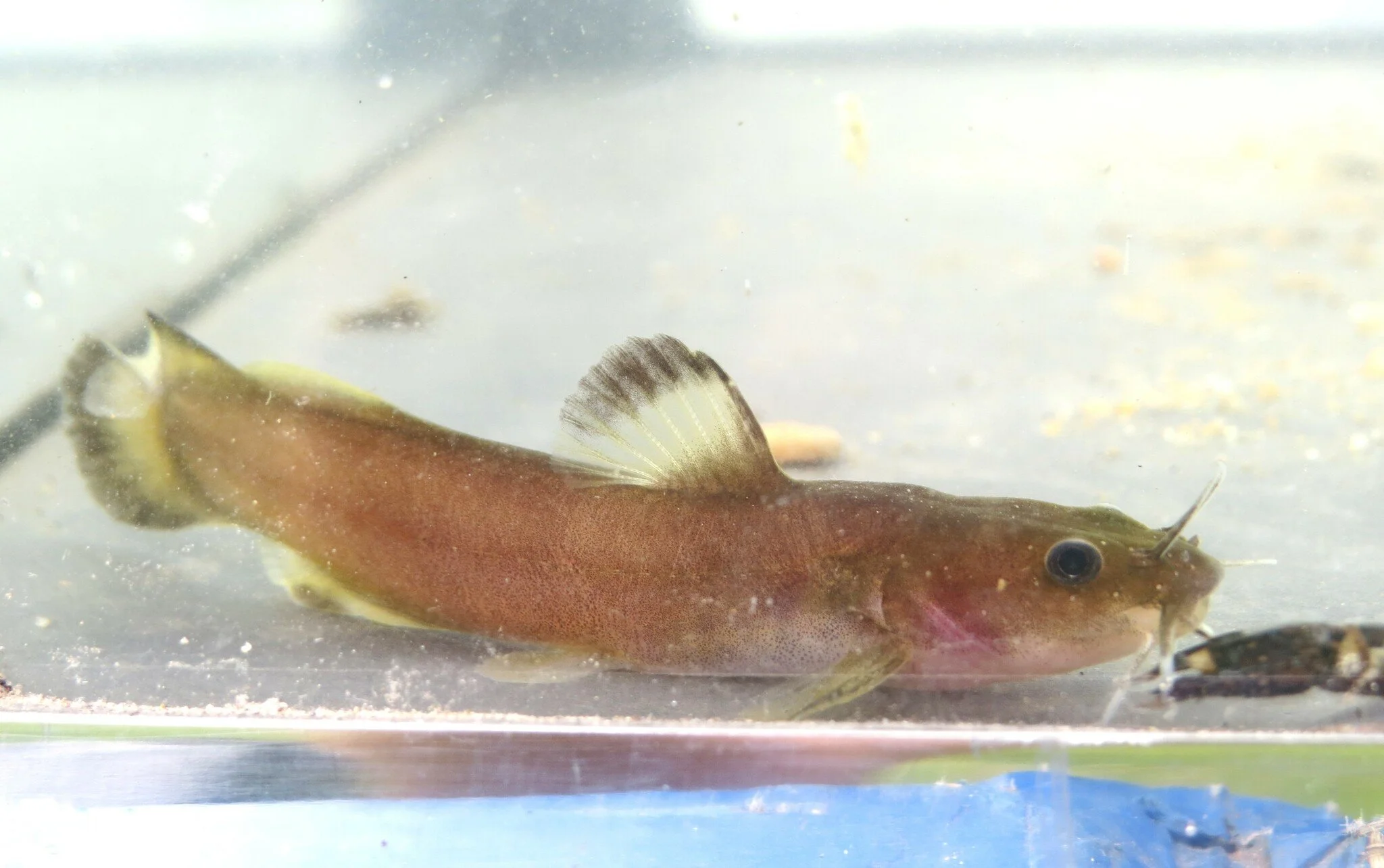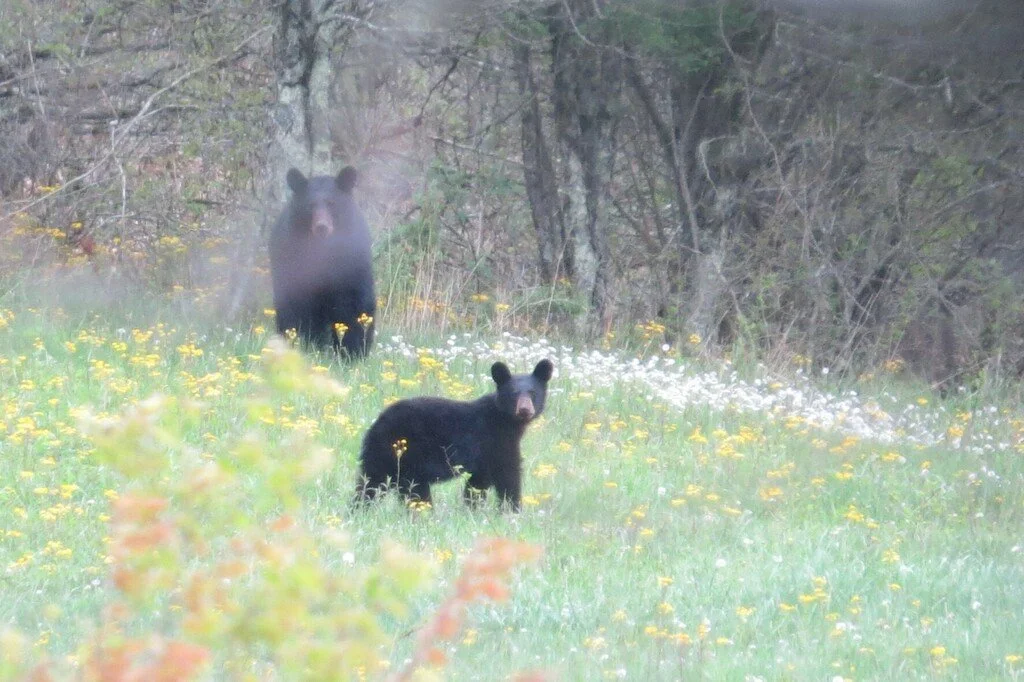Recent Sightings of the Blue Ridge
By Cade Campbell - Pre-MRNR, Spring 2024
West Virginia White nectaring on Star Chickweed (Stellaria pubera) along Della’s Branch. Photo by Cade Campbell.
As anticipation builds for the 50th Spring Mt. Rogers Naturalist Rally, there are some species reappearing on the landscape to add to the excitement. During our programs for local schools over the past few weeks, the full force of spring has shared some special moments and special residents that call our Virginia mountains home.
The federally-threatened West Virginia White (Pieris virginiensis) butterflies are abundant in the forests behind the Schoolhouse searching for toothwort plants to lay their eggs. They’re easily recognized as the only solid-white butterfly found in the state of Virginia, and the dwindling species is endemic to the Appalachian Mountains. Look for them in sun-dappled areas of cove forest with lots of spring ephemeral wildflowers. The invasive-exotic garlic mustard is lethal to these butterflies but smell like their caterpillars’ favorite foods, other plants in the cabbage family. Our habitats around Whitetop Mountain composed of intact native plant communities are essential for the butterfly’s survival.
A Margined Madtom (Noturus insignis) captured accidentally during an aquatic macroinvertebrates program with Fries School. Photo by Cade Campbell.
Underwater, life is also thriving. Fish are entering the breeding season, moving from deep pools into the shallow waters where they’re easily visible. One of the more unusual fish we’ve been noticing recently with stream ecology programs is the tiny, mildly-venomous catfish known as the Margined Madtom (Noturus insignis). They’re only found in rushing water full of smooth stones with crevices and crayfish burrows. To protect themselves from the wide gape of larger fish, particularly trout, they’re armed with painful, needle-like pectoral barbs. When handled, they can leave a sharp, swollen pinprick, the aquatic equivalent of a bee sting. Margined madtoms are easily distinguished from other native catfish by eel-like, black-fringed fins and a silver, scaleless body, seldom growing more than six inches in length.
The large Dragonhunter (Hagenius brevistylis) nymph, an excellent leaf mimic.
Dragonflies are also emerging. Nymphs are large and ready to climb onto land, shedding hollow exuviae and drying into fast and bloodthirsty aerial predators. The largest native dragonfly, the Dragonhunter (Hagenius brevistylis), is one of the most charismatic. An impressive hunter that mainly captures other dragonflies, they can take down prey as large as a hummingbird. The aquatic nymphs are very different. The palm-sized juveniles are leaf-mimics, and hide flattened in clusters of sycamore and boxelder roots in larger streams where they eat other aquatic macroinvertebrates. Large, spider-like Allegheny River Cruisers (Macromia alleghaniensis) are also preparing to emerge. Both a Dragonhunter and River Cruiser nymph from this spring are pinned in the library collections. In the colder, smaller and more inhospitable waters of Della’s Branch, the delicate, golden-striped Southern Pygmy Clubtail (Lanthus vernalis) is emerging camouflaged against shimmering riffles as the creek flows through dense rhododendron thickets.
The mother Eastern Black Bear (Ursus americanus) beckoning her last cub to escape into the woods, just before the entire family vanished back into the hillside forests of Fairwood Valley.
Black bears are back! We observed a healthy family of bears in Fairwood Valley last week. The mother successfully raised three cubs last year we observed several times throughout the year, and they will remain a nomadic family unit this year. Early mornings and evenings are the best time to see bears foraging, but it is an unusual treat. Unlike other, more populous areas in the Southern Appalachians, the bears found in the Mt. Rogers region are rarely habituated, or accustomed to humans. Most are still very reclusive and fearful of humans, and it’s a unique privilege to see one of these truly wild bears. Since they utilize ancient strategies to find food, instead of raiding dumpsters, coolers, and picnic baskets, black bear signs are abundant. Right now, many black bears survive the surprisingly lean spring season by flipping rocks in streams to hunt salamanders, similar to herpetological adventures at the rally. However, unlike the humans attending our programs, bears are allowed to eat the salamanders.
Be aware of your surroundings, and you may get the chance to see some amazing creatures! The Spring Rally is a wonderful time to explore, with a host of experts to help you identify and understand some of Virginia’s strangest and most biodiverse communities of wildlife on a rejuvenated spring landscape. If you have not yet registered for the rally, you can do so below. The big weekend is almost here, and we hope to see you on the mountain.












